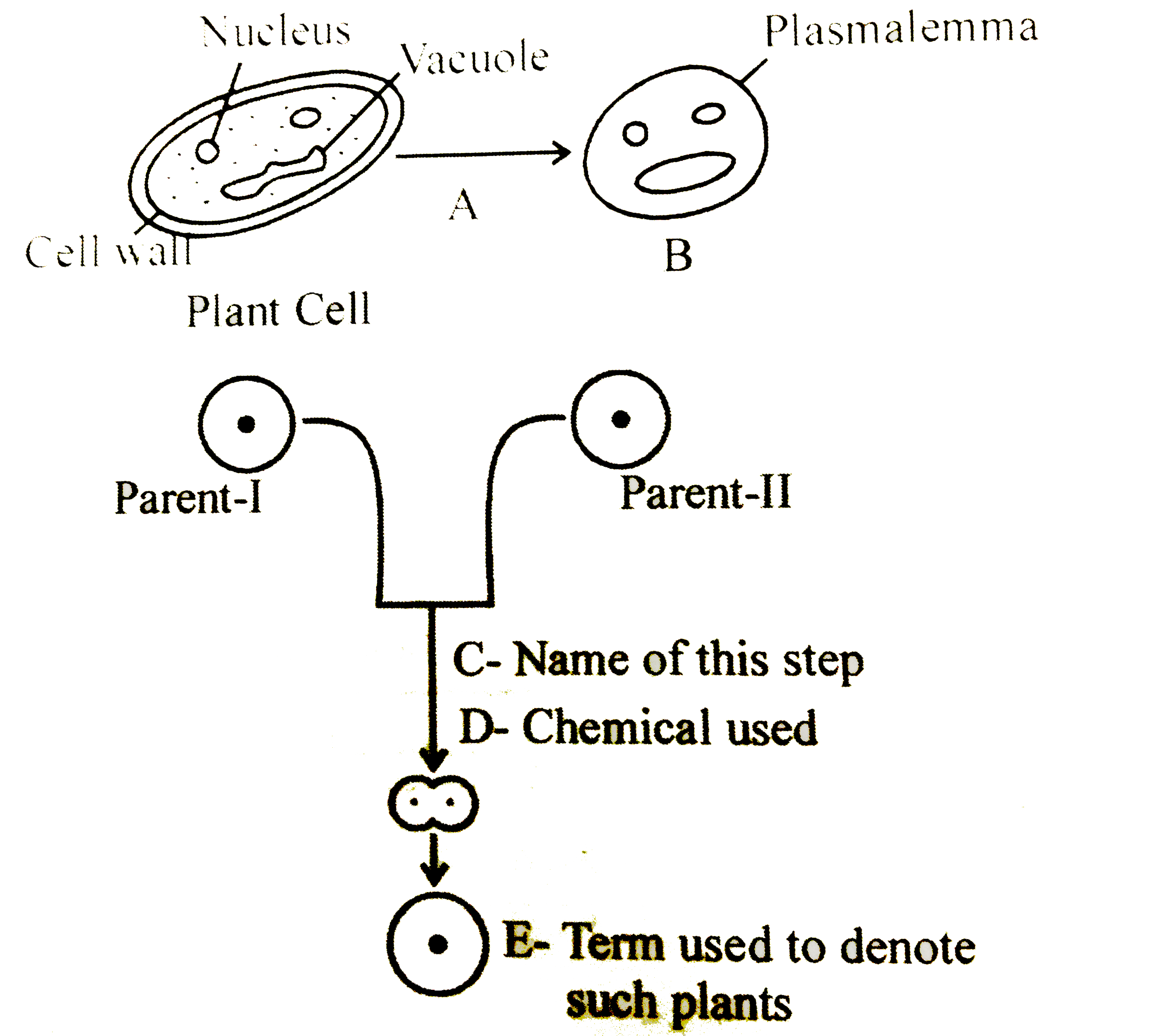Genetically improved crop varieties can be developed by
(a) Somatic hybridization
(b) Transgenic technology
(c) Somaclonal variations
(d) Both a and b
Somatic hybridisation
Transgenic technology
Somaclonal variations
Both A and B
The correct Answer is:D
To determine how genetically improved crop varieties can be developed, let's analyze the options provided:
1. Understanding Somatic Hybridization:
- Somatic hybridization, also known as somatic fusion or protoplast fusion, is a technique where protoplasts (cells without cell walls) from two different plant species are fused together. This results in a hybrid cell that can develop into a new plant with characteristics from both parent plants. This method is effective in creating genetic variation and improving traits in crops.
Hint: Somatic hybridization involves fusing cells without walls to create hybrids.
2. Understanding Transgenic Technology:
- Transgenic technology involves the introduction of a gene from one organism into the genome of another organism. This is done by isolating the desired DNA fragment and inserting it into the host organism's DNA. This method allows for the direct modification of specific traits in crops, making it a powerful tool for developing genetically improved varieties.
Hint: Transgenic technology modifies crops by inserting specific genes from other organisms.
3. Understanding Somaclonal Variation:
- Somaclonal variation refers to the genetic variation that occurs in plants regenerated from tissue culture. While it can lead to the development of new traits, it is generally less controlled and predictable compared to somatic hybridization and transgenic technology. Therefore, it is not the primary method for developing genetically improved crop varieties.
Hint: Somaclonal variation results from tissue culture but is less reliable for specific improvements.
4. Evaluating the Options:
- Option A: Somatic hybridization - Correct, as it can produce genetically improved varieties.
- Option B: Transgenic technology - Correct, as it directly modifies the genetic makeup of crops.
- Option C: Somaclonal variations - While it can induce variation, it is not the best method for developing improved varieties.
- Option D: Both A and B - This is the best choice since both somatic hybridization and transgenic technology are effective methods for developing genetically improved crop varieties.
Final Answer: The correct choice is (d) Both A and B.
- Somatic hybridization, also known as somatic fusion or protoplast fusion, is a technique where protoplasts (cells without cell walls) from two different plant species are fused together. This results in a hybrid cell that can develop into a new plant with characteristics from both parent plants. This method is effective in creating genetic variation and improving traits in crops.
- Transgenic technology involves the introduction of a gene from one organism into the genome of another organism. This is done by isolating the desired DNA fragment and inserting it into the host organism's DNA. This method allows for the direct modification of specific traits in crops, making it a powerful tool for developing genetically improved varieties.
- Somaclonal variation refers to the genetic variation that occurs in plants regenerated from tissue culture. While it can lead to the development of new traits, it is generally less controlled and predictable compared to somatic hybridization and transgenic technology. Therefore, it is not the primary method for developing genetically improved crop varieties.
- Option A: Somatic hybridization - Correct, as it can produce genetically improved varieties.
- Option B: Transgenic technology - Correct, as it directly modifies the genetic makeup of crops.
- Option C: Somaclonal variations - While it can induce variation, it is not the best method for developing improved varieties.
- Option D: Both A and B - This is the best choice since both somatic hybridization and transgenic technology are effective methods for developing genetically improved crop varieties.
Topper's Solved these Questions
- BOOK - DINESH PUBLICATION ENGLISHCHAPTER - PLANT BREEDING AND DISEASE CONTROLEXERCISE - Check your Grasp10videos
PLANT BREEDING AND DISEASE CONTROL
- BOOK - DINESH PUBLICATION ENGLISHCHAPTER - PHYLUM - ARTHROPODAEXERCISE - CYG20videos
PHYLUM - ARTHROPODA
- BOOK - DINESH PUBLICATION ENGLISHCHAPTER - Plant Growth and MovementsEXERCISE - BRAIN TEASERS-IV41videos
Plant Growth and Movements
Similar Questions
Keys are required for
(a) Phylogenetic classification
(b) Natural classification
(c) Identification of organism
(d) Both b and cView SolutionDifferent varieties of Pigeon, cattle and crops have been developed through
(a) Artificial selection
(b) Introductions
(c) Evolution
(d) Random breedingView SolutionA new crop triticale has been evolved by intergeneric hybridization between-
(a) Wheat and Aegilops
(b) Wheat and rice
(c) Rice and Maize
(d) Rye and wheatView SolutionIn human digestion is
(a) Intercellular
(b) Intracellular
(c) Extracellular
(d) Both a and bView SolutionA GM crop is
(a) Irradiated crop
(b) Transgenic crop
(c) Raised on green manure
(d) A green manureView SolutionBiospecies is based on
(a) Cytological traits
(b) Reproductive isolation
(c) Genetic isolation
(d) Both b and cView SolutionGiven below is the process of somatic hybridisation indentify A, B, C, D and E.
 View Solution
View SolutionGiven below is the flow chart showing the process of somatic hybridisation. Identify A,B,C,D and E.
 View Solution
View SolutionGenetically modified plants have been useful in increasing:
(a) Crop yield
(b) Nutritional value of food
(c) Tolerance against abiotic stresses
(d) All of the aboveView SolutionWhich is the oldest method for crop improvement ?
(a) Hybridization
(b) Selection
(c) Mutation breeding
(d) IntroductionView Solution

